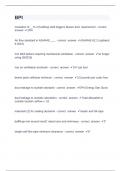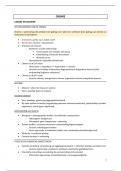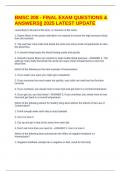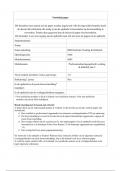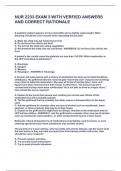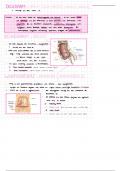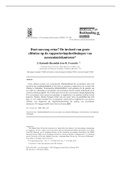Prof. Belén Piqueras
Reading List:
Joseph Conrad’s Heart of Darkness (you must get the novel)
T.S. Eliot’s The Waste Land (you must get the poem)
Ezra Pound’s “Imagism” (poems will be on Moodle)
Ernst Hemingway’s Men Without Women (stories will be on Moodle)
Virginia Woolf’s Mrs Dalloway (you must get the novel)
F. S. Fitzgerald’s The Great Gatsby (you must get the novel)
Course objective: to illustrate with the works above these two pivotal modernist topics:
1. A Changing World: The Modernist “lost man”
Will be discussed in Conrad, Eliot, Woolf & Fitzgerald’s works.
2. Formal Experimentalism: The Liberation from Discursiveness
Will be discussed in Eliot, Pound, Hemingway & Woolf’s works.
,16.09.2021
Modernism
Modernism: tendency to question the convictions of the preceding age and replace them with
updated new alternatives.
Early Modernism: Period of history that succeeded the Middle Ages (which ended in 1500
AD)
Central period of Modernism: 1890’s – 1920’s >> It only lasted 30 years, but it was a
period of enormous experimentation: artists explore new ways of writing, painting, doing
architecture, etc.
20s: “Jazz Age” and predominance of free life, enjoying life, spending a lot of money on
material stuff (enthusiasm for cars, air travel, the telephone, and other technological advances
etc.) until 1929 crash.
Literature of 30’s: the transition from 20’s to 30’s caused by 1929 Wall Street “crash” >>
The Great Depression >> in the 30’s artists were more concerned with topics of social
change, economic issues, etc.
Post-modernism: 50’s
Introduction
Turn of the century (19th to 20th): period of rapid social changes and significant
developments in science, politics, warfare and technology (fully industrialized society)
> shift away from tradition!
Modernists find themselves alienated from Victorian morality and convention.
Modernists become really optimistic about art (art can save and redeem the world;
bring order into chaos), but they have a pessimistic view towards the world, which is
now volatile and fragile, chaotic.
Unlike 19th century artists, Modernists stopped believing in 'progress'.
All the enduring certainties of the enlightenment dissolve.
The idea that humanity was making slow but steady progress is shattered by the
unjustified slaughter of WWI (1914-1918)
Enormous influence of the theories of Charles Darwin (theory of evolution by natural
selection and the belief that man doesn’t come directly from god but is an evolved
animal that comes from the ape undermined the religious certainty of the general
public), Karl Marx (he argued there were fundamental contradictions within the
capitalist system – and that, contrary to the libertarian ideal, the workers were
anything but free) and Sigmund Freud (belief that man’s mind has 3 levels: superego,
ego, id): man’s uniqueness and superiority is questioned.
Also influence from: Bergson (concept of time) and Einstein (concept of relativity)
, Radical shift away from tradition >> Modernism rebelled against nineteenth century
academic and historicist traditions.
“traditional” forms of art, architecture, literature, religious faith, social organization
and daily life are outdated
Use of new and innovative forms of expression. A renovation of the arts was wanted
>> Ezra Pounds “make it new”
As a result of this quick and strong sense of change (not only positive change) and
progress, mankind is suddenly facing new conditions of living and don’t recognise
their lives anymore compared to their passed lives. (e.g. people leave the country sides
and go to work in the cities) Towards end of 19 th men feel overwhelmed and crushed
by the abolition of all old values, references and beliefs. Men were used to fixed ideas
concerning mankind and society, so now the start feeling a sense of “loss” (the “lost”
man).
In modernism men and women are alienated, frustrated, isolated, vulnerable. They
cannot live happily.
From Realism to Abstraction
During Victorian era (1837-1901) prevailed Realism: Reality was the objective of the 19 th
century artists >> the best artist was that who could resemble reality as close as possible. Art
was about beauty, about painting and portraying the beautiful things of the world. From the
1870s onward, however, the ideas that progress was always good came under increasing
attack. They believed that the accelerating ‘progress’ would lead mean to isolation and
detachment from social values. As a result of this pessimism, modernist artists and writers
don’t want to represent reality anymore so they move in the direction of abstractionism:
modern artists typically rejected decorative motifs, preferring to emphasise the materials used
and pure geometrical forms. (Impressionism, Cubism, Dadaism, Expressionism, Surrealism,
etc.)
In the arts and letters, two ideas originating in France:
1. Impressionism: impressionist artists are not trying to paint a reflection of real life, but
an ‘impression’ of what the person, light, atmosphere, object or landscape looked like
to them (e.g. Monet)
2. Symbolism, marked by a belief that language is expressly symbolic in its nature.
(Language is not natural. It’s conventional and artificial.)
Modern Art:
Art:
- doesn’t have to represent reality, or to be beautiful.
- can allude or evoke reality in an indirect way, but never depicts it.
- has an internal order and coherence, a structure, an internal interrelation of all of its
elements. That coherence that lacks in reality is to be found in art.
- has to be difficult. Modern artists want to break the connection between art and reality,
and they don’t want it to be so accessible to everyone. They don’t want it to be a
window to reality.

